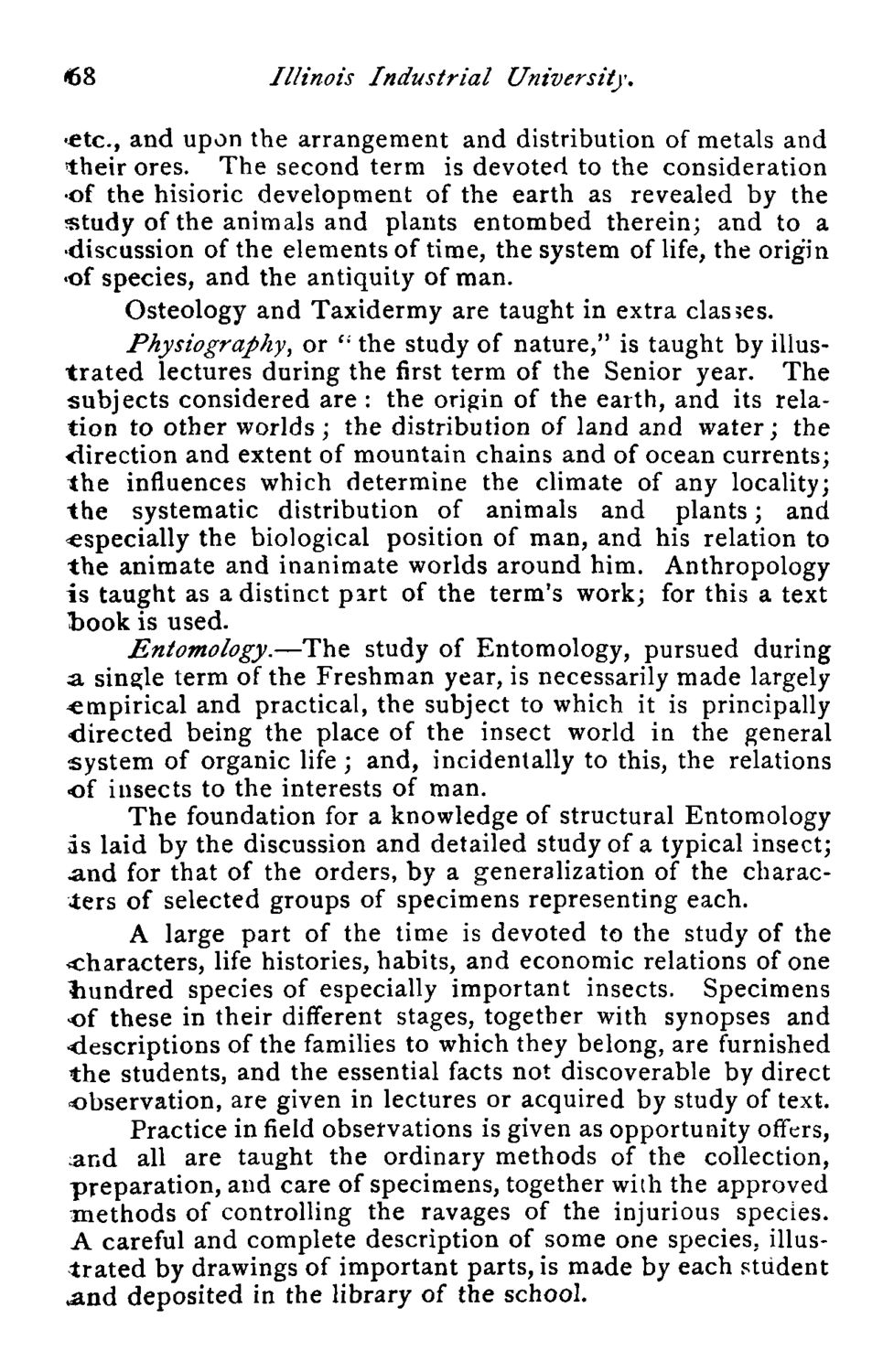| |
| |
Caption: Course Catalog - 1884-1885
This is a reduced-resolution page image for fast online browsing.

EXTRACTED TEXT FROM PAGE:
<58 Illinois Industrial University, •etc., and upon the arrangement and distribution of metals and their ores. The second term is devoted to the consideration •of the hisioric development of the earth as revealed by the study of the animals and plants entombed therein; and to a •discussion of the elements of time, the system of life, the origin •of species, and the antiquity of man. Osteology and Taxidermy are taught in extra classes. Physiography, or '•' the study of nature," is taught by illustrated lectures during the first term of the Senior year. The subjects considered are : the origin of the earth, and its relation to other worlds ; the distribution of land and water; the direction and extent of mountain chains and of ocean currents; the influences which determine the climate of any locality; the systematic distribution of animals and plants; and •especially the biological position of man, and his relation to the animate and inanimate worlds around him. Anthropology is taught as a distinct part of the term's work; for this a text book is used. Entomology.—The study of Entomology, pursued during a single term of the Freshman year, is necessarily made largely ^empirical and practical, the subject to which it is principally •directed being the place of the insect world in the general system of organic life ; and, incidentally to this, the relations of insects to the interests of man. The foundation for a knowledge of structural Entomology as laid by the discussion and detailed study of a typical insect; .and for that of the orders, by a generalization of the characters of selected groups of specimens representing each. A large part of the time is devoted to the study of the •characters, life histories, habits, and economic relations of one liundred species of especially important insects. Specimens •of these in their different stages, together with synopses and •descriptions of the families to which they belong, are furnished the students, and the essential facts not discoverable by direct observation, are given in lectures or acquired by study of text. Practice in field observations is given as opportunity offers, and all are taught the ordinary methods of the collection, preparation, and care of specimens, together with the approved methods of controlling the ravages of the injurious species. A careful and complete description of some one species, illustrated by drawings of important parts, is made by each student •and deposited in the library of the school.
| |